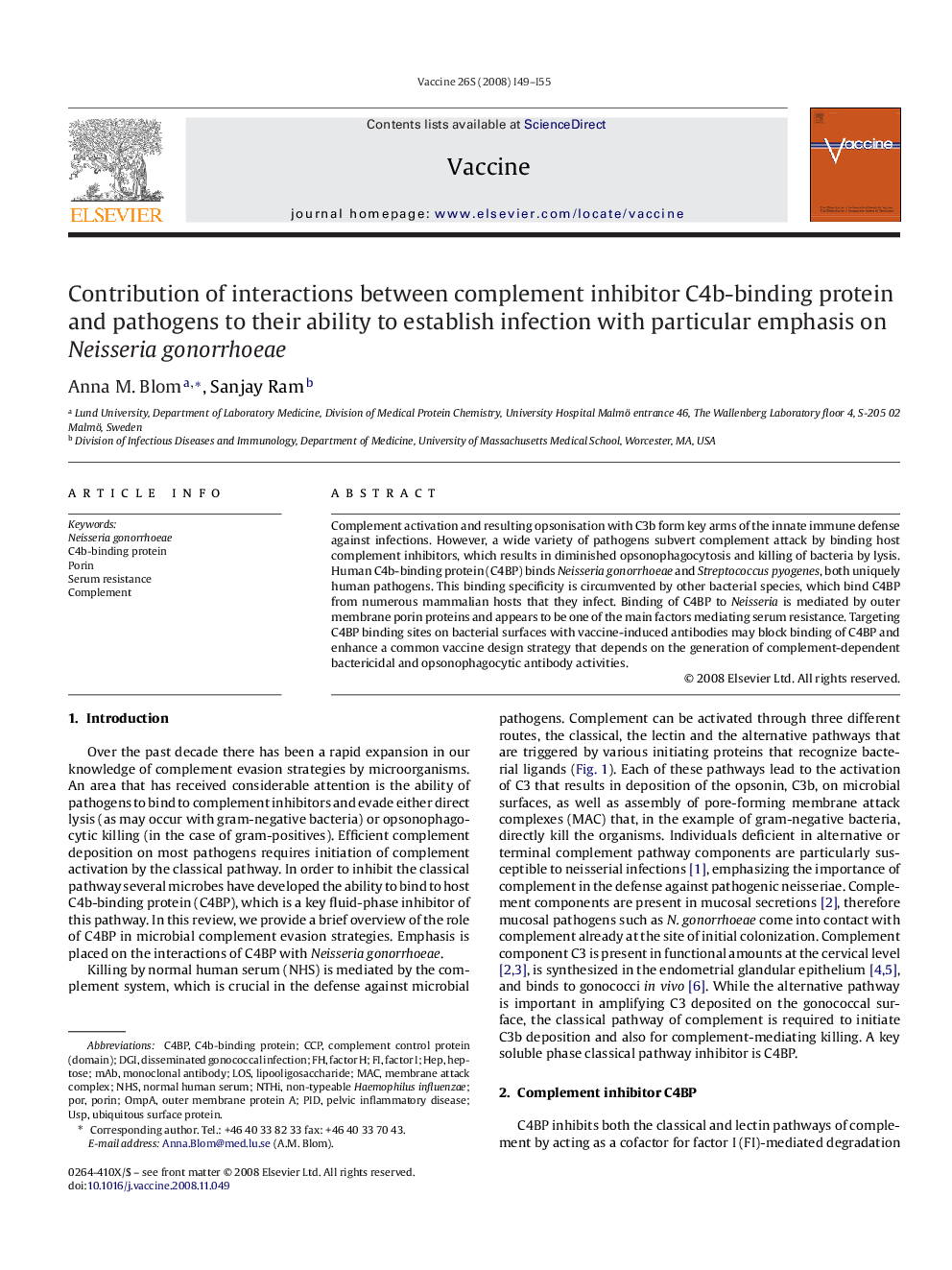| Article ID | Journal | Published Year | Pages | File Type |
|---|---|---|---|---|
| 10970420 | Vaccine | 2008 | 7 Pages |
Abstract
Complement activation and resulting opsonisation with C3b form key arms of the innate immune defense against infections. However, a wide variety of pathogens subvert complement attack by binding host complement inhibitors, which results in diminished opsonophagocytosis and killing of bacteria by lysis. Human C4b-binding protein (C4BP) binds Neisseria gonorrhoeae and Streptococcus pyogenes, both uniquely human pathogens. This binding specificity is circumvented by other bacterial species, which bind C4BP from numerous mammalian hosts that they infect. Binding of C4BP to Neisseria is mediated by outer membrane porin proteins and appears to be one of the main factors mediating serum resistance. Targeting C4BP binding sites on bacterial surfaces with vaccine-induced antibodies may block binding of C4BP and enhance a common vaccine design strategy that depends on the generation of complement-dependent bactericidal and opsonophagocytic antibody activities.
Keywords
mAbPIDOmpAPORDGINHSUSPHEPNTHiCCPC4bpNon-typeable Haemophilus influenzaelipooligosaccharideMonoclonal antibodyLospelvic inflammatory diseasenormal human serumDisseminated gonococcal infectionFactor Hfactor IComplementSerum resistanceMACNeisseria gonorrhoeaeHeptoseC4b-binding proteinOuter membrane protein APorinmembrane attack complex
Related Topics
Life Sciences
Immunology and Microbiology
Immunology
Authors
Anna M. Blom, Sanjay Ram,
